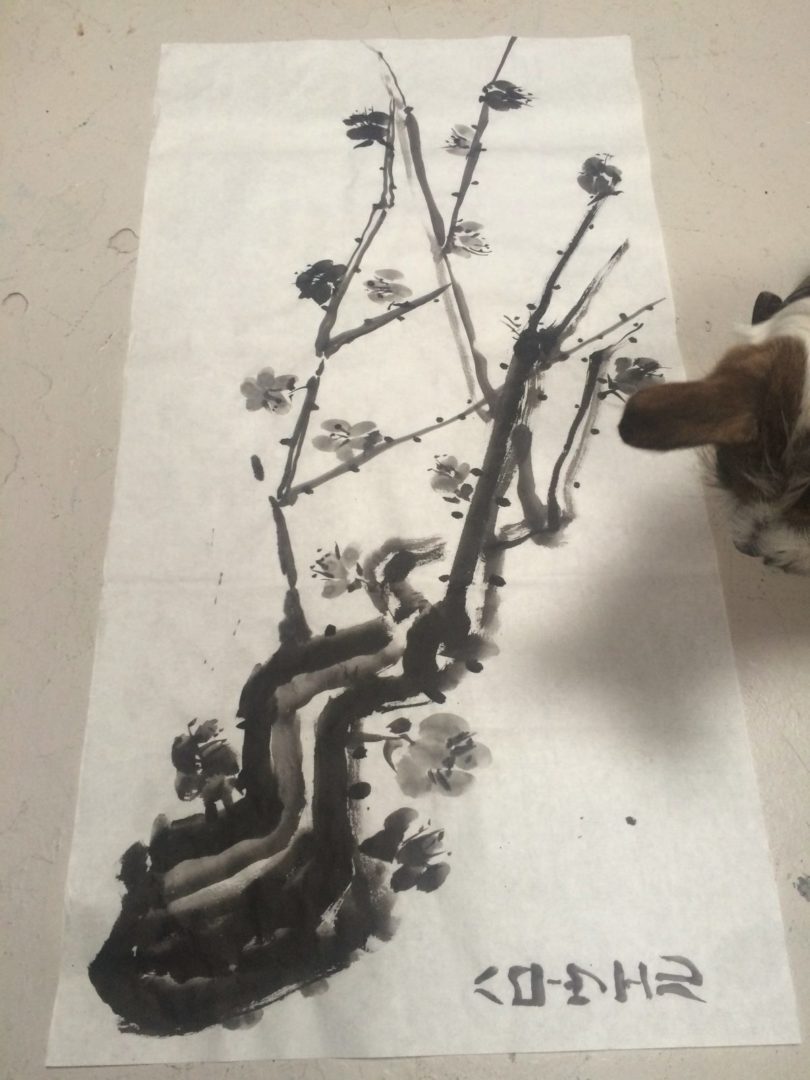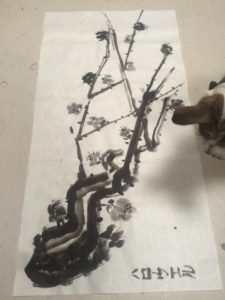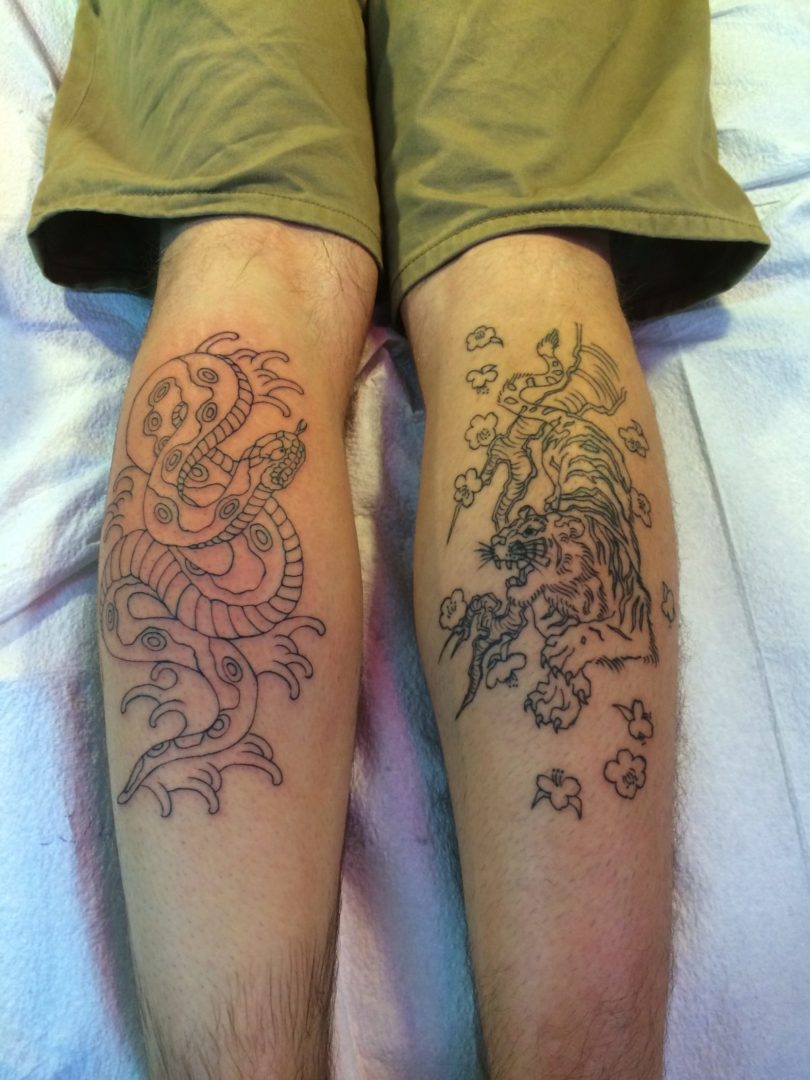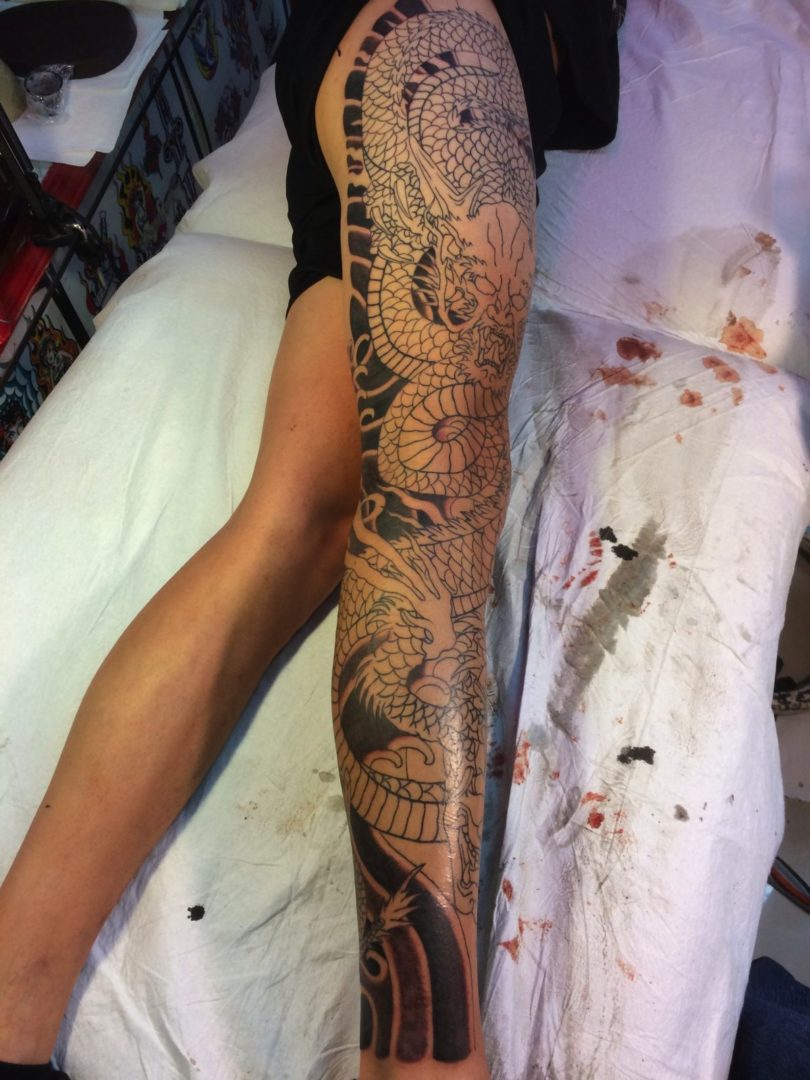
Sumi-E
- Posted by Carl Hallowell
- On May 7, 2015

Today i will begin anew. Today i will embark on the “journey of a thousand ri”. Today has loomed on my horizon like a vast city of gold, just out of reach, but there in plain sight. I have performed my purifications, I have bolstered up my studies. I have attempted to correct the mind, I have attempted to set the mind free. I will let it roam from place to place, it will not stop. This would be, will be, unvaccilating mind.
What realm I am approaching is insignificant. It could be comparable to many other new directions taken by many other Dallas tattoo artists before me. It may or may not become apparent soon, but surely it will guide my destiny as a traditional tattooer. It will empower my tattooing, and help me to reach new plateaus.
In all things, the outward manifestation is secondary to the inward reality. The outer can be primped and shaped, superficially twisted into an illusion of that which it seeks to become. Like the moon reflected in the water, it is not real. The outside can be premeditated, the cover of the book can fool the passer-by more often than not. The inside is a truer place, shielded from sun and scrutiny. A cool damp place where life can begin, where the pillars of our being can be erected and nourished. Where, with determination, we can mold ideals and values. We can create our own Buddha or find our Buddha nature that is already hidden somewhere within.
Lord, may I seek to develop this inner attainment. If the world never sees it that is okay. But, for my own sake, and for the sake of all sentient beings, let me grow in this pursuit. If I am a koi, lord, let me become a dragon. If I am a dog, lord, let me become a man. Please bless me in this new pursuit. Let me follow the road, the path, the inward light. Let the statues of Jizo guide my way.
What Is Sumi-e
Sumi-e, also known as “ink wash painting,” is a traditional East Asian painting technique that originated in China and later became popular in Japan, Korea, and Vietnam. The term “sumi-e” translates to “ink painting” in Japanese, highlighting the central role of ink in this art form.
Sumi-e paintings typically involve using black ink made from soot combined with water to create various shades of gray, ranging from the deepest blacks to the faintest grays. Artists use a brush made of animal hair, such as wolf, goat, or horsehair, to apply the ink onto absorbent paper or silk.
The essence of sumi-e lies in simplicity, economy of brushstrokes, and capturing the essence of the subject rather than depicting intricate details. Subjects in sumi-e paintings often include landscapes, nature scenes, birds, flowers, and animals, depicted in a minimalist and expressive style.
Traditional Japanese Tattoo Artist In Dallas
In Dallas, Texas, enthusiasts of traditional Japanese tattoo artistry need look no further than Carl Hallowell. Renowned for his mastery of this revered style, Carl brings to life the rich heritage and symbolism of Japanese tattooing with every intricate design.
With a deep understanding of traditional Japanese inspired tattoos, including dragons, koi fish, cherry blossoms, and more, Carl creates tattoos that honor the time-honored techniques and cultural significance of this art form. From bold, dynamic compositions to delicate, flowing lines, each tattoo reflects Carl’s commitment to precision and authenticity.
As one of the foremost traditional Japanese tattoo artists in Dallas, Carl Hallowell invites you to embark on a journey of artistry and expression. Whether you’re seeking a classic sleeve, a striking back piece, or a subtle accent, Carl’s expertise and attention to detail ensure a tattoo experience that exceeds expectations.
Experience the beauty and tradition of Japanese tattooing with Carl Hallowell, the best tattoo artist in Dallas, where artistry meets excellence.



